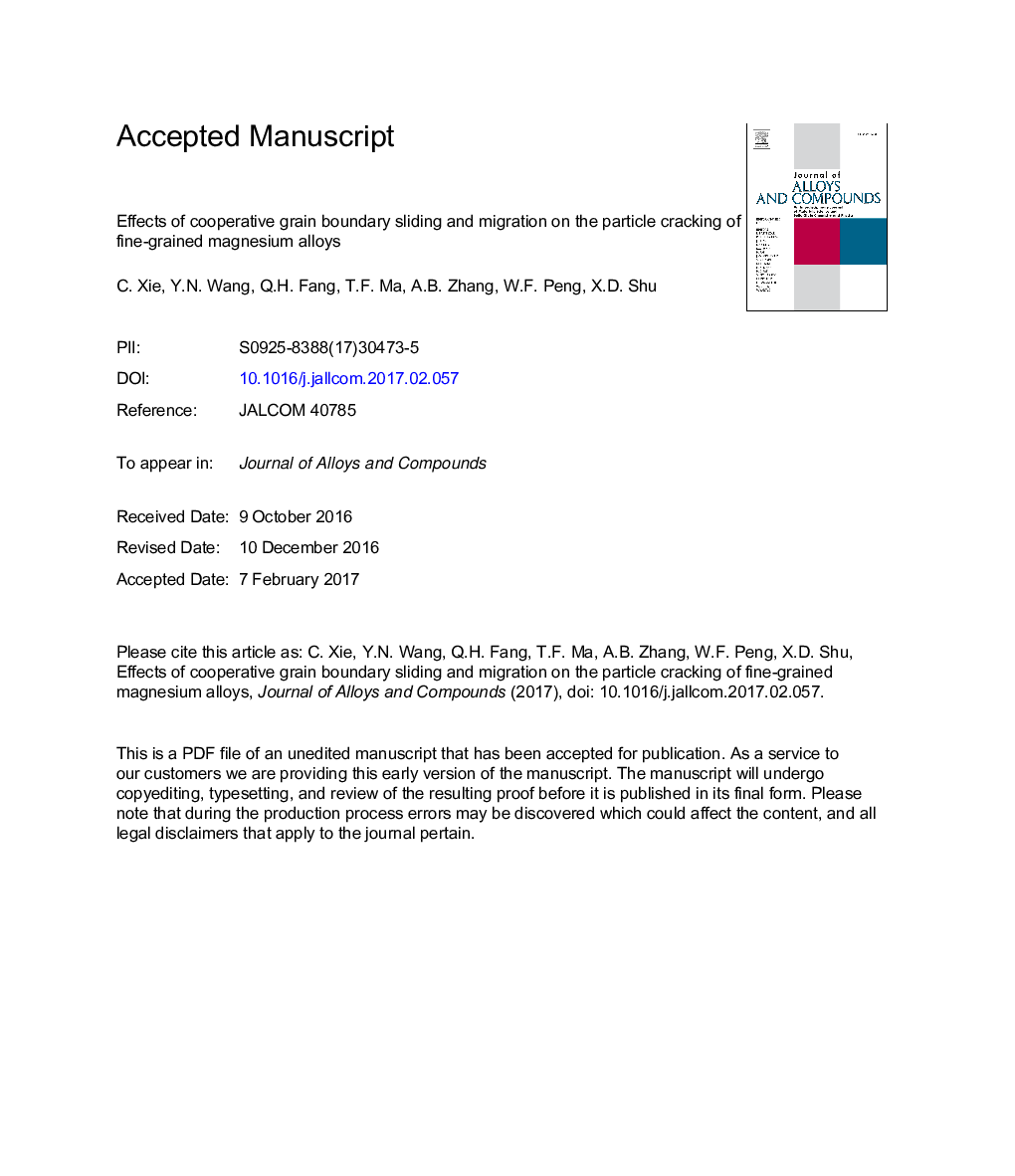| Article ID | Journal | Published Year | Pages | File Type |
|---|---|---|---|---|
| 5460038 | Journal of Alloys and Compounds | 2017 | 24 Pages |
Abstract
This study theoretically investigates superplastic deformation and two typical coordination mechanisms of fine-grained magnesium (Mg) alloys. The interaction among grain boundary sliding, grain boundary migration and the fracture of particles during superplastic deformation is extensively discussed. The process of cooperative grain boundary sliding and migration is modelled with double wedge disclination dipoles. The whole-region stress field and the critical crack length are attained using the complex potential method for plane elasticity. The results show that the cracking of the particle itself is an effective coordination mechanism that can relax the intense stress concentration resulting from superplastic deformation based on grain boundary sliding; the farther the grain boundary slides and the higher the misorientation angle is, the more energetically the particle fractures; the higher the shear modulus ratio of the particle to Mg matrix and the smaller the particle radius, however, the larger is the resistance to crack nucleation and the weaker is the coordination effect based on the particle cracking; as a competitive coordination mechanism, cooperative migration consumes the local energy accumulated by the grain boundary sliding, toughening the particle-reinforced alloys for some relative orientations between the moving boundaries and the particle.
Related Topics
Physical Sciences and Engineering
Materials Science
Metals and Alloys
Authors
C. Xie, Y.N. Wang, Q.H. Fang, T.F. Ma, A.B. Zhang, W.F. Peng, X.D. Shu,
